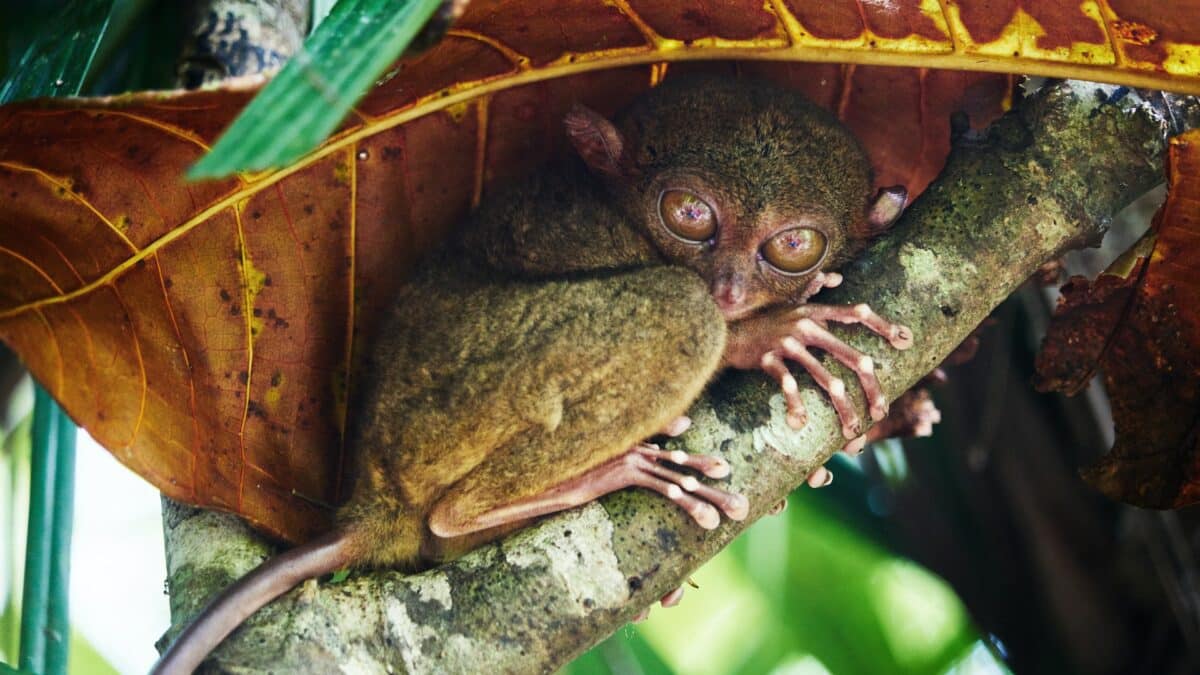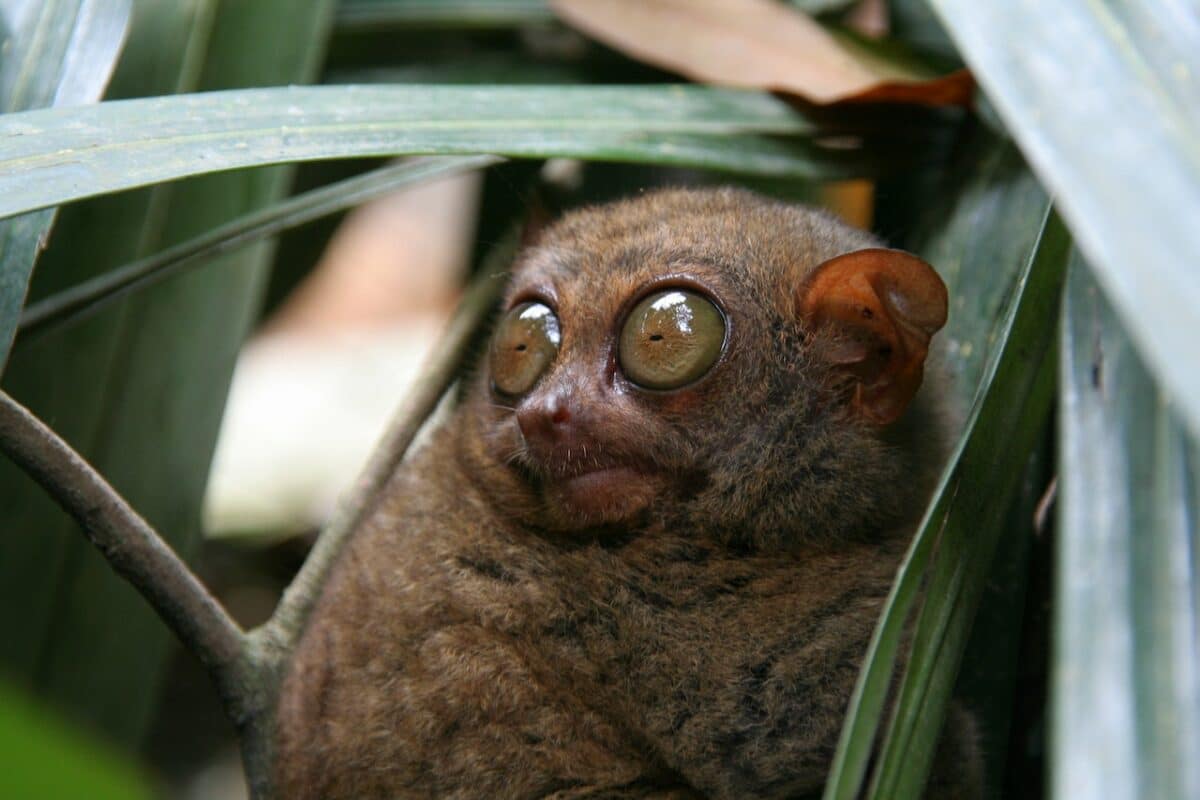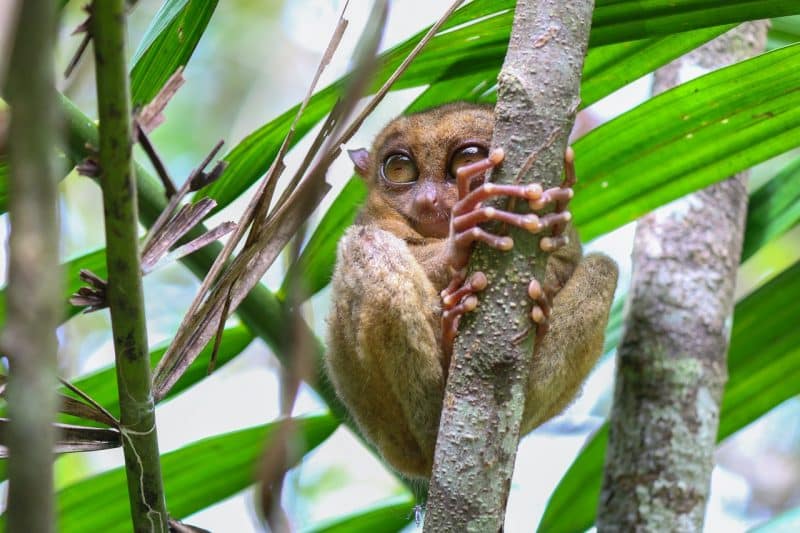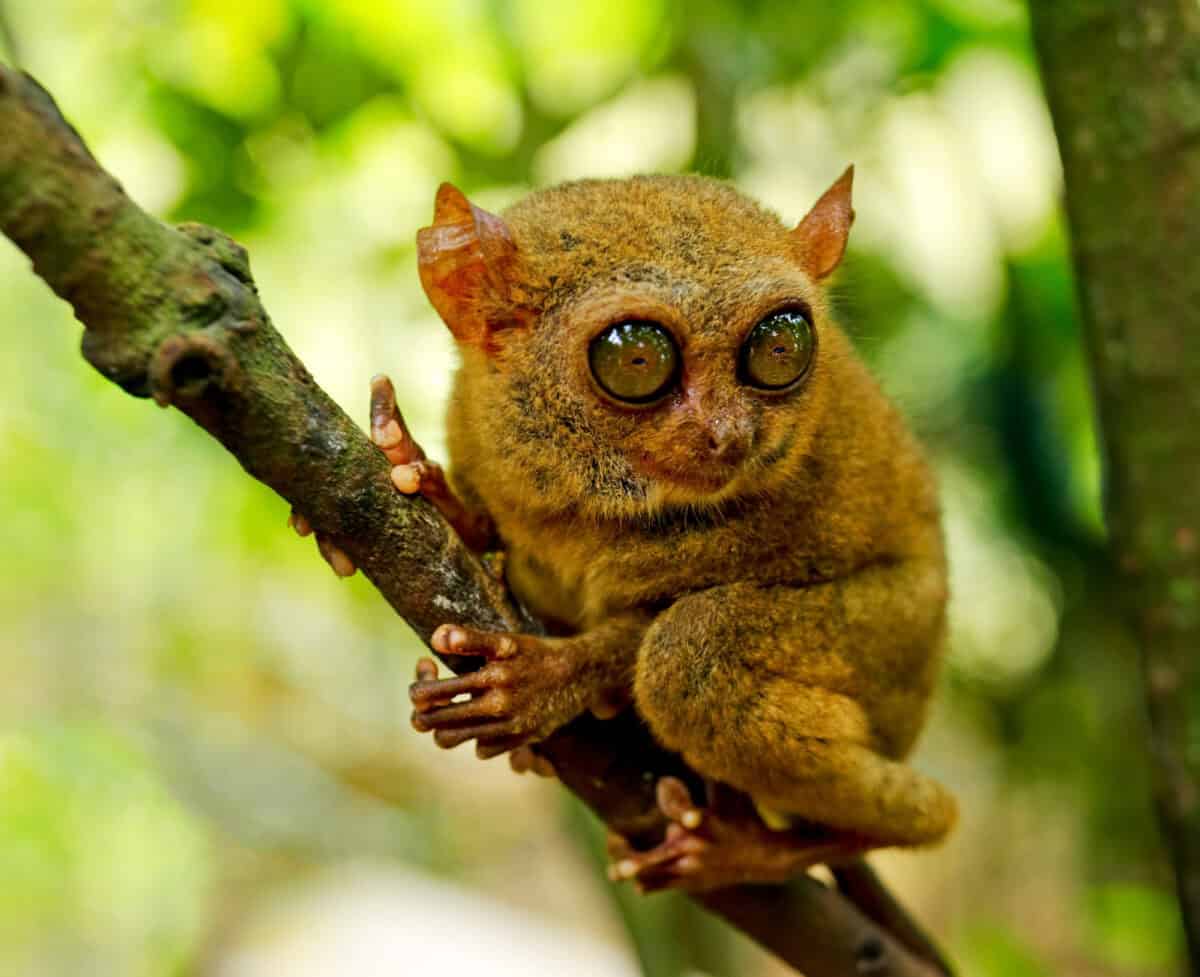The tarsier is a small, nocturnal primate that has often captured the imagination of nature enthusiasts and scientists alike, mainly due to its striking features and unique behavioral attributes. Despite being more closely related to monkeys, tarsiers have earned the nickname “lemur with giant eyes” because of their physical resemblance to lemurs and their similarly large, expressive eyes. These fascinating creatures inhabit the dense tropical forests of Southeast Asia, particularly in countries like the Philippines, Indonesia, and Malaysia.
A Glimpse of the Tarsier’s Anatomy

The most defining feature of the tarsier is undoubtedly its eyes. Each eye is as large as its brain, measuring about 16 millimeters in diameter. These oversized eyes provide excellent night vision, essential for their nocturnal lifestyle. Unlike other primates, a tarsier’s eyes are fixed, so they cannot swivel in their sockets. Instead, tarsiers have adapted by developing extremely flexible necks, allowing them to rotate their heads nearly 180 degrees to compensate for their stationary gaze.
Apart from their eyes, tarsiers have long, slender fingers and toes equipped with adhesive pads, perfect for gripping branches and navigating their treetop habitats. Their hind limbs are particularly powerful, enabling them to leap distances up to ten times their body length in a single bound.
The Ecological Habitat and Behavior of Tarsiers

Tarsiers prefer dense, lush forests where they can easily hide from predators and search for food. Equipped with acute auditory senses and impressive stealth, they are primarily insectivorous but are also known to prey on small vertebrates like birds or lizards. Tarsiers use their sharp teeth and claws to capture prey with swift, exacting movements.
Socially, tarsiers are intriguing creatures. They are generally solitary or live in small family groups consisting of a mated pair and their offspring. These animals are territorial and communicate through a series of high-pitched calls, inaudible to human ears, helping them maintain contact with each other across the dense forest canopy.
The Lifespan and Reproduction of Tarsiers

Tarsiers have relatively long lifespans for small mammals, living up to 12 years in the wild. Their reproduction rate is slow, with females typically giving birth to a single offspring after a gestation period of around six months. Newborn tarsiers are well-developed at birth, with their eyes open and capable of climbing. However, they remain dependent on their mothers for nourishment and protection in the initial stages of life.
The Conservation Status and Threats to Tarsiers

Despite their adaptability, tarsiers face significant threats in the wild, primarily due to habitat destruction caused by logging, agriculture, and urban development. Furthermore, the pet trade poses a considerable risk, with people drawn to their unique appearance. Unfortunately, tarsiers do not fare well in captivity, as they require complex habitats and vast territories to thrive.
Several conservation efforts are underway to protect these unique creatures. Protected areas have been established to preserve their natural habitats and breeding programs are being developed to maintain genetic diversity. Additionally, conservationists are working to raise awareness about the importance of tarsiers and the ecological role they play in their environments.
Conclusion: Appreciating the Unique Place of Tarsiers in the Animal Kingdom

The tarsier is a remarkable beacon of biodiversity, showcasing the intricate wonders of evolution. With their mesmerizing eyes and exceptional adaptability, tarsiers continue to fascinate researchers and nature lovers worldwide. However, ensuring their survival requires our active engagement and dedication to conservation efforts. Through increased awareness and protection of their habitats, we can safeguard the future of these captivating creatures and the ecosystems they inhabit.
- 10 Animals That Risked Their Lives to Save Humans - August 9, 2025
- 14 Reasons Why Bears Are Afraid of Humans (Most of the Time) - August 9, 2025
- 11 Frogs That Look Too Weird to Be Real - August 9, 2025

